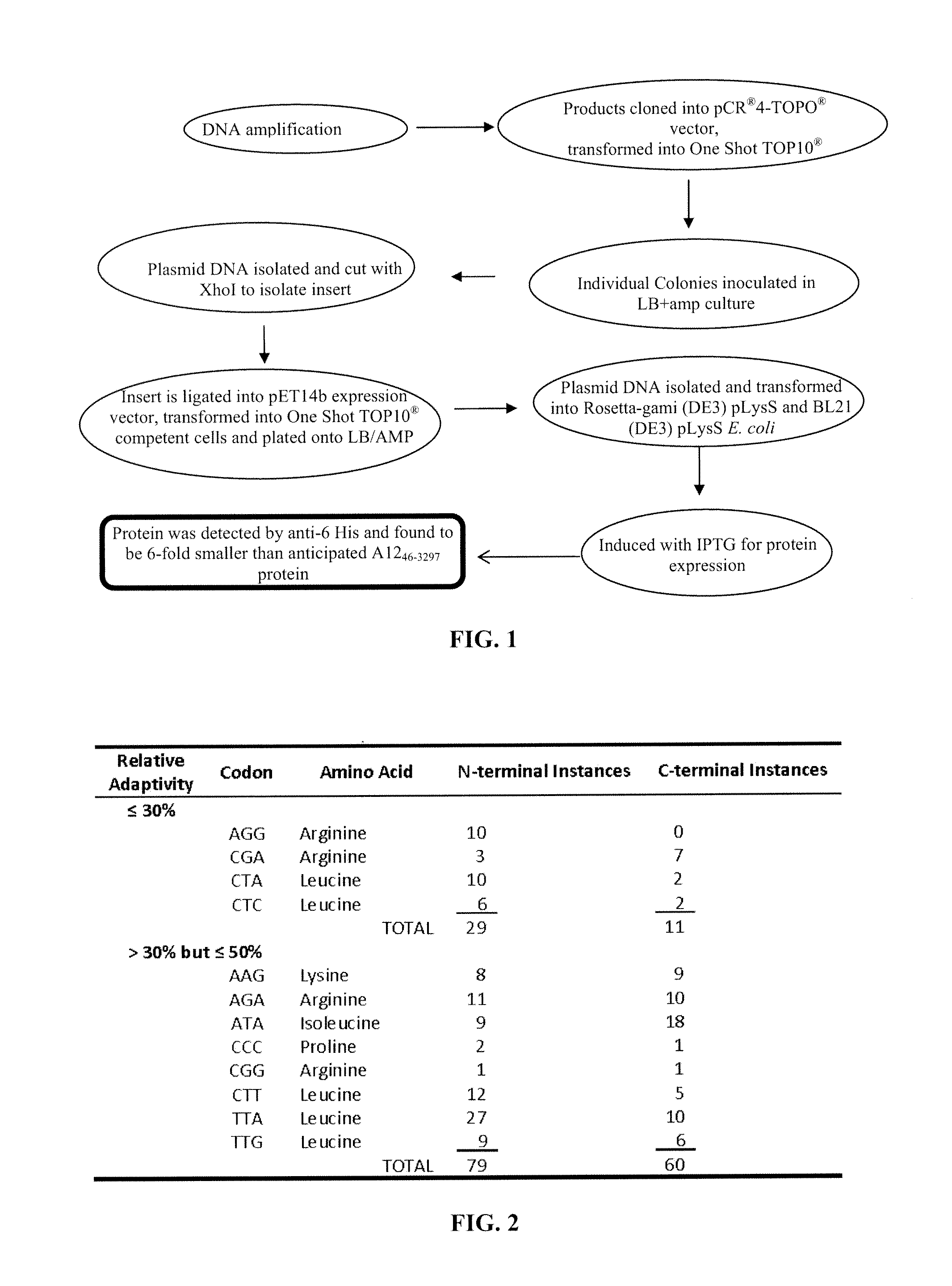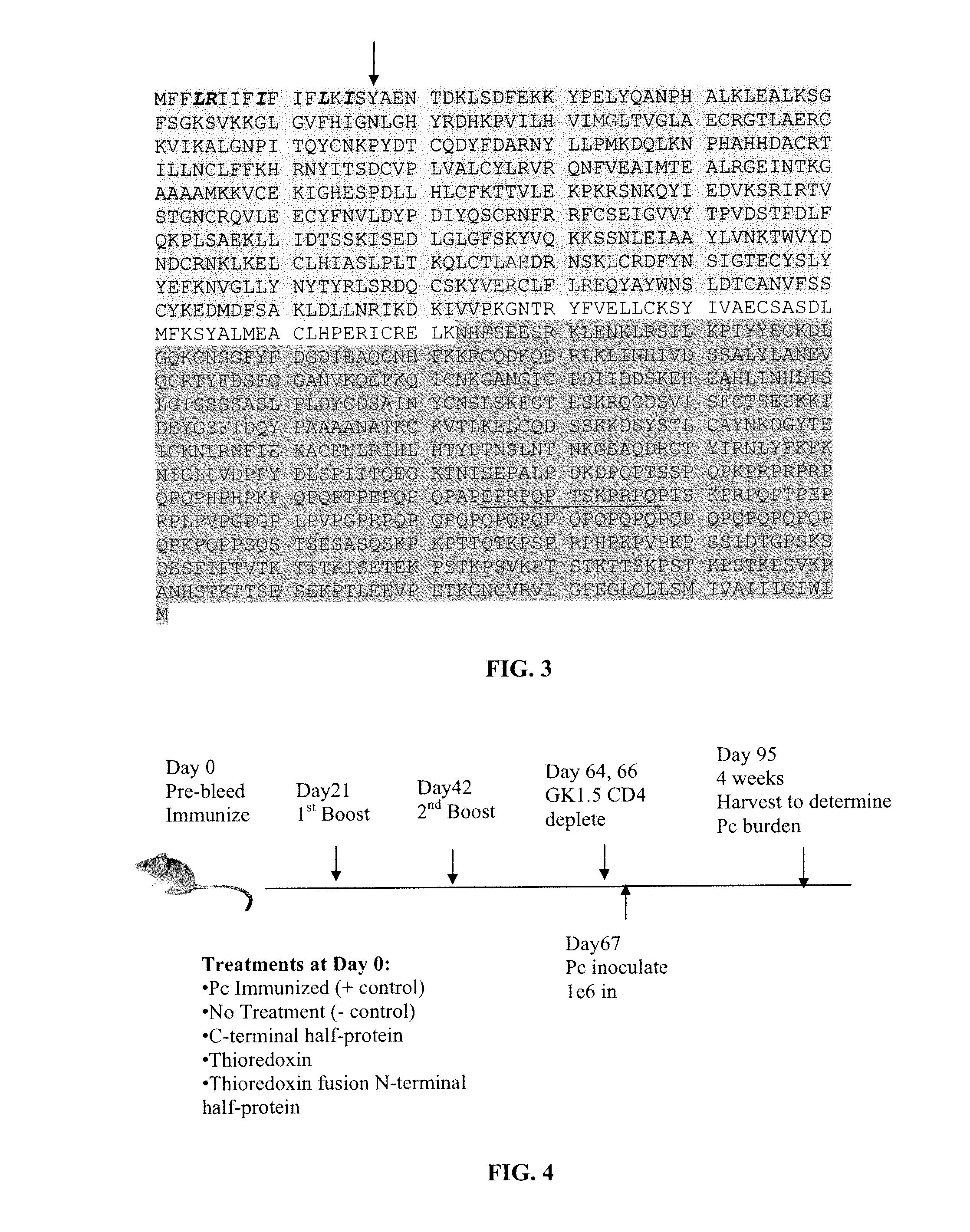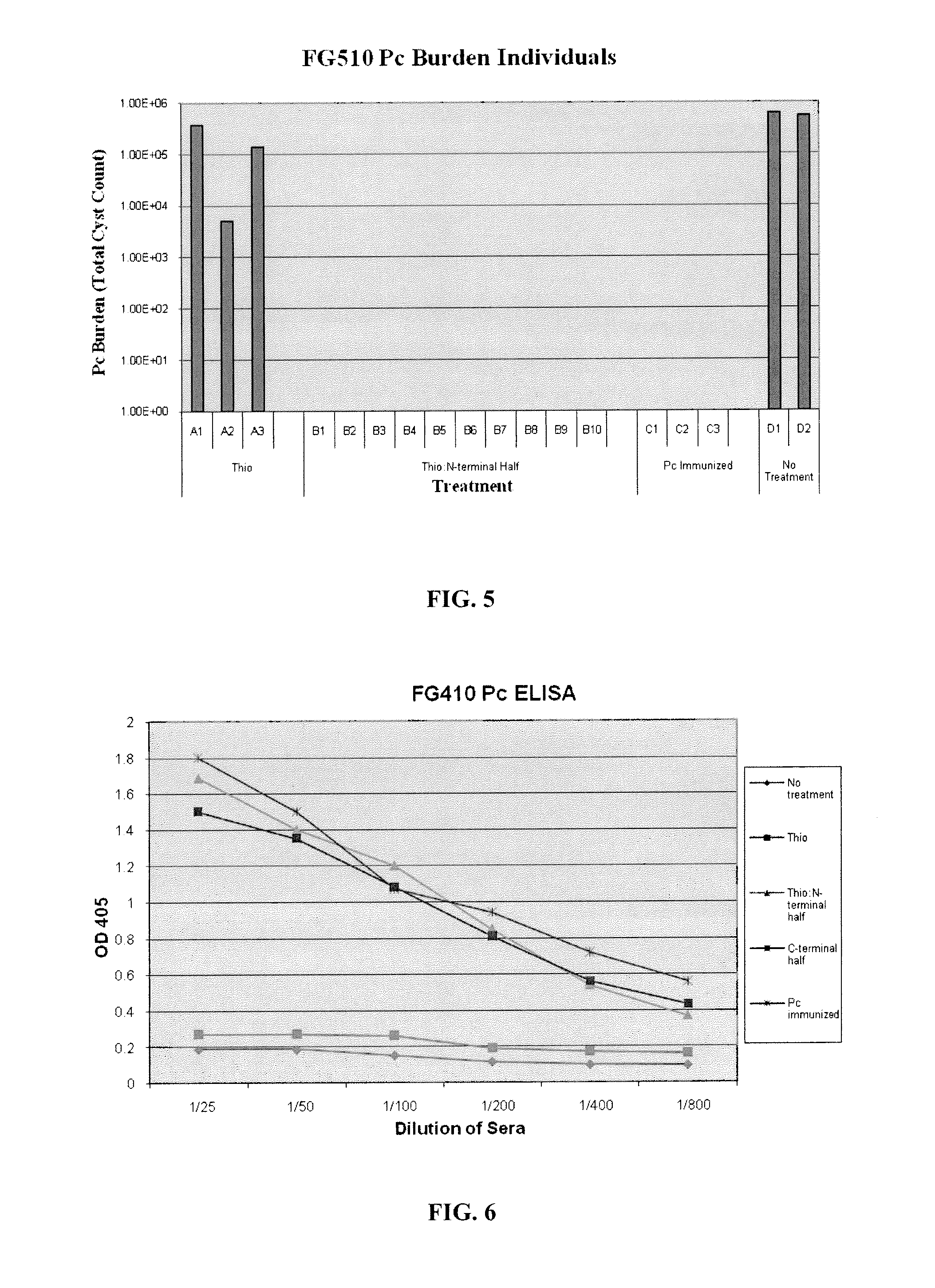Optimized antigens of pneumocystis and use thereof
- Summary
- Abstract
- Description
- Claims
- Application Information
AI Technical Summary
Benefits of technology
Problems solved by technology
Method used
Image
Examples
example 1
Expression of an Optimized Antigen of Pneumocystis for Evaluation as a Potential Vaccine
[0158]Protein was generated according to the flow chart illustration of FIG. 1. PCR was used to amplify the A1246-3297 segment for cloning from stock of pET14b:A12full. Next, gel extract was used to purify the gene fragment and clone into PCR4 TOPO sequencing vector. The vector was transformed into One Shot TOP10′ chemically competent E. coli cells. The pCR4 TOPO:A1246-3297 was sequenced with M13 vector to ensure correct sequence. A12 was cut with Xhol endonuclease to create sticky ends for ligation into the pET14b expression vector. pET14b was transformed with insert into TOP10′ chemically competent E. coli cells. pET14b:A1246-3297 was transformed into expression strains of E. coli: BL21 (DE3) pLysS and Rosetta-gami (DE3) pLysS. To ensure correct insert with proper orientation, sequencing and restriction diagnosis was performed. Protein expression was induced using 1 mM IPTG at 0.8≦OD600≦1.0 for...
example 2
Immunization Using an Optimized Antigen of Pneumocystis
[0161]Immunizations were performed on CB17 WT mice at Day 0 (FIG. 4) in study FG410 and FG510 (FIG. 5). Mice were CD4 depleted prior to Pneumocystis inoculation. In FG410, mice were Pneumocystis inoculated via intranasal inoculation. In FG510, mice were Pneumocystis inoculated by cohousing. Four weeks after challenge with Pneumocystis, mice were euthanized and lung homogenates and blood sera were taken to evaluate Pneumocystis burden and immune response, respectively.
[0162]The N-terminal half generated as a thioredoxin fusion protein provided significant protection (FIG. 6), but was not recognized by 4F11 (FIG. 7). The C-terminal half-length protein was recognized by 4F11, but only provided a half log reduction in burden.
[0163]Additional activity data for thio-c1 is illustrated in the table of FIG. 8.
[0164]Clones were generated from a stock of pET14b:A12 using primers to eliminate the first 45 base pairs. PCR product was then c...
example 3
Identifying Homologues in Human Pneumocystis jiroveci to Regions of the A12 Protein from Mouse Pneumocystis
[0166]Pneumocystis is the fungal pathogen that results in Pneumocystis carinii pneumonia (PCP)—a hallmark lung infection and leading cause of death in patients with compromised immune systems. More than half of adults who have died from AIDS complications suffered at least 1 PCP infection.
[0167]Although Pneumocystis affecting each mammalian species is different, there exist homologous regions as confirmed by the monoclonal antibody (Mab) 4F11. This Mab was proven to bind to conserved regions between different species of Pneumocystis confirmed by immunofluorescence assays (IFA). Furthermore, this mouse Pneumocystis protein has been cloned and expressed and found to confer antibody production and protection to Pneumocystis infection in mice. The next step is to identify the human homologue, clone and express the protein, and confirm binding with 4F11 Mab to the human Pneumocysti...
PUM
| Property | Measurement | Unit |
|---|---|---|
| Fraction | aaaaa | aaaaa |
| Fraction | aaaaa | aaaaa |
| Fraction | aaaaa | aaaaa |
Abstract
Description
Claims
Application Information
 Login to View More
Login to View More - R&D
- Intellectual Property
- Life Sciences
- Materials
- Tech Scout
- Unparalleled Data Quality
- Higher Quality Content
- 60% Fewer Hallucinations
Browse by: Latest US Patents, China's latest patents, Technical Efficacy Thesaurus, Application Domain, Technology Topic, Popular Technical Reports.
© 2025 PatSnap. All rights reserved.Legal|Privacy policy|Modern Slavery Act Transparency Statement|Sitemap|About US| Contact US: help@patsnap.com



